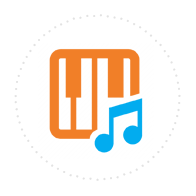Musika Quick Stats
24 Years
Since We Started
41,456+
Happy Customers
10,769
Cities with Students
3,123
Teachers in Network
Lesson Special - Up to 20% OFF! Get Started Now with a Risk-Free Trial!
Here are just a few of the many teachers offering Violin lessons in Anaheim . Whether you are looking for beginner guitar lessons for your kids, or are an adult wanting to improve your skills, the instructors in our network are ready to help you now!
Instruments: Violin Viola
I am very passionate about music. I've been playing music for most of my life and I don't think I will ever stop! I started playing violin when I was 8 years old, but when I discovered viola in middle school, I decided to make the switch. I've always wanted to keep music in my life, so I attended the University of Redlands and graduated with a bachelor of music in music education. Read More
Instruments: Piano Guitar Violin Saxophone Bass Guitar Organ Acoustic Guitar
I actually dreamed of becoming a popular guitarist during high school because I was so into the band but that passion was just short-lived. I have showcased my violin talent during high school pageant. As far as I can remember, one of my informal students was my brother. I taught him every song that he would want to play in piano or guitar and shared some basic knowledge on how to play and remember the chords easily. Read More
Instruments: Guitar Violin Drums Bass Guitar Ukulele Mallet Percussion Orchestral Percussion Conga Latin Percussion Music Acoustic Guitar
Drums and Percussion: Alfred's Kids Drumset Course-Dave Black and Steve Houghton Elementary Drum Method-Roy Burns Intermediate Snare Studies-Mitchell Peters Alfred's Beginning Drum Set Method-Sandy Feldstein and Dave Black Primary Handbook for Mallets-Garwood Whaley Violin: Suzuki Method Guitar: Hal Leonard Guitar Method-Will Schmid and Greg Koch Ukulele: Kid's Ukulele Course-Ron Manus and L.C. Harnsberger Bass: Hal Leonard Bass Method Ed Friedland As students begin to grasp more on fundamentals, they will be introduced along the way to various repertoire relating to their skillset or challenging them to go to the next level. Read More
Instruments: Violin
My methods when it comes to the bow arm/hand come from the teachings of Galamian and DeLay. We then discuss what I'm hearing and seeing. I want to hear and see you at your best, and if I'm not hearing and/or seeing you at your best, then we need to match the two. If it's a mismatch (you sound all right, but your technique is not great), then we fix. Read More
Instruments: Piano Guitar Voice Violin Cello Viola Trumpet Saxophone Flute Clarinet Drums Bass Guitar Synthesizer Harmonica Recorder Electric Violin Fiddle Piccolo Oboe English Horn Keyboard
I never yell or scold. I can keep the boat on even keel, and not sink to drama. I am warm but firm about requiring hard work on improving. My teachers include some of the world's greatest professors at prestigious Universities. My teaching is world class as you they say. I am familiar with the textbook techniques handed down for centuries, so you will be learning the tried and true technique that the world's best musicians use. Read More
Instruments: Violin Viola
With consistent practice and lessons I’ve had success with having some of my youngest students start with Mozarts twinkle little star and in 2-3 years play at a very high level with skill, artistry and reading abilities in Suzuki books 4/5 Vivaldi Concertos. Students start off with a box violin to focus on posture and ear training right away. Once some of the fine motor skills are established, we transfer these skills directly to the violin, and begin create sound on the instrument. Read More
Instruments: Piano Guitar Violin Cello Viola Trumpet Trombone Saxophone Flute Clarinet Recorder Fiddle French Horn Piccolo Oboe
My approach to learning an instruments is to have the students learn to play by ear first before they can start learning to read music. I find that most students are able to progress quickly because it frees them to focus on the playing the instruments rather than reading notes. I consider reading music like different subject that they learn later. Learning music is like learning to speak. First we learn to talk and then we learn to read and write. Read More
Instruments: Violin Viola
If you have a Music Degree, what is it in (Performance, Education, Musicology, Theory, Composition, etc) and why did you choose that degree?
My Bachelor of Music was a concentration in Violin Performance. I chose this path because I primarily wanted to be a performer able to play in orchestras and live music settings. I was also lucky enough to have a teaching internship during college, so although I was giving recitals and learning major violin repertoire, I was also learning how to be a better teacher.
My performance education has allowed me to do everything I want to do because it was a well rounded program. I am able to perform with orchestras and popular artists as well as teach many students!
What does a normal practice session look like for you?
A normal lesson with me begins with scales and technical exercises. We go over things like posture, bow hold, and left hand position in the first portion of the lesson. The student focuses on intonation, bowing straight, and making a solid sound. After scales and etudes, we move to any repertoire the student is working on. For younger students, it is generally something out of the Suzuki books. For older students, it is generally a more advanced piece, or any orchestra repertoire they are working on in their school or youth orchestra. While practicing repertoire, we focus on musicality as well as technique.
Do you use specific teaching methods or books? (Ex: Alfred, Bastion, Suzuki, Hal Leonard) Why did you choose them if you did?
I teach the Suzuki Method as well as All for Strings method books for beginners. My more advanced students use the Carl Flesch Scale Book, as well as standard etude books (Sevcik, Dont, Wolfhart, Dounis, etc.) I grew up learning the Suzuki method, so naturally when I began teaching, those were the books I was most comfortable with. The Suzuki method is a wonderful way for students to learn skills through playing pieces. I find it makes students excited because they are actually getting to play a song rather than only scales or etudes.
I supplement the Suzuki method with All for Strings so students get comfortable with note reading and technique early on.
When did you decide to become a professional musician? Was it a gradual decision or was there a defining moment for you?
My decision to become a professional musician was a gradual one. I began playing the violin when I was eight years old. As I got older, I also became very involved in musical theatre. My schedule was filled with violin lessons and practice as well as stage productions and rehearsals. At some point the violin became my main focus, and I knew I wanted to pursue it in college. I had always been on the music career path in my private lessons, but once I decided to audition for colleges, I had to work even harder and prepare for my professional music education.
24 Years
Since We Started
41,456+
Happy Customers
10,769
Cities with Students
3,123
Teachers in Network
Trusted as the industry leader, for over 21 years the teachers in our network have been providing Violin lessons in Anaheim to students of all ages and abilities.
We'll then reach out to the teachers for you.
Schedule the risk-free trial lesson directly with the teacher.
Continue with that teacher or try someone else.








Eric
I would like to check availability and pricing for in person violin lessons at 7 or 7:30pm one night during the week, and possibly for one online lesson a week as well.
June
I am looking to rates for violin lessons for my daughter of 10 years of age. She is in Kids Orchestra during the school year but during the summer she is clueless.
Nancy
My 10 year old would like to start taking violin lessons again. He took 1 year of lessons in 3rd grade, so he would basically be starting over. Thank you